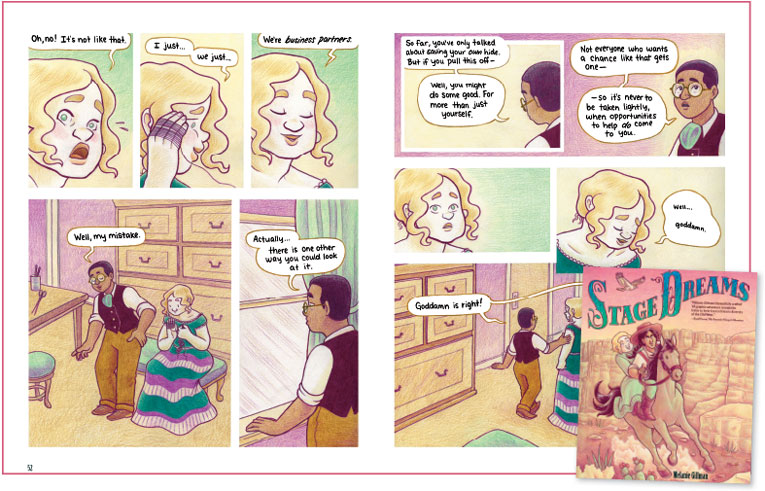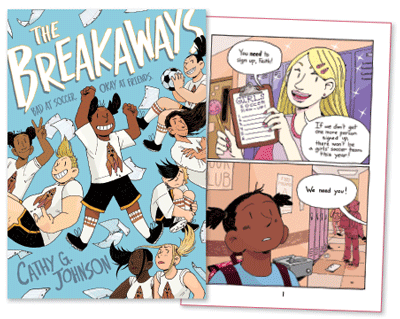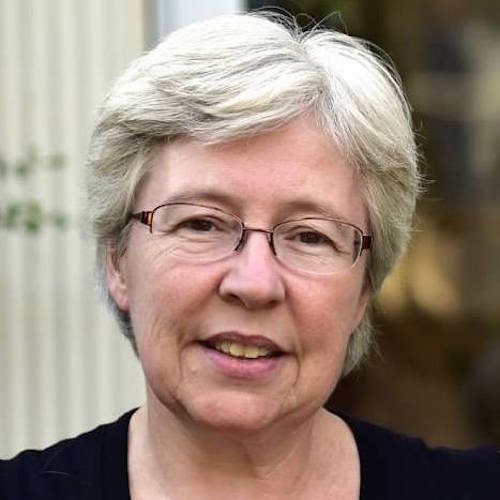LGBTQIA+ Graphic Novels for Young Readers | Stellar Panels
“Every LGBTQ kids’ book that manages to make its way onto a bookstore or library shelf is a life raft,” says Melanie Gillman, creator of the graphic novel As the Crow Flies. Columnist Brigid Alverson considers LGBTQIA+ themes in the graphic format, with recommended titles for young readers.

| Recommended Reading |
June is Pride Month, a time of celebration for the LGBTQIA+ community. On this 50th anniversary of the Stonewall uprising, there’s a lot to be joyful about. But there’s still a long way to go. The political fight for equal rights continues, while many young LGBTQIA+ people combat bias at home, school, and in their communities. Growing up in 2019, it’s often a struggle for those contending with their identity and orientation.
Fortunately, graphic novels can help by letting readers know they aren’t alone and shining a light on hardships as well as loving friendships and relationships. I talked to a number of authors about their books and what they hope readers will gain from them.
“Every LGBTQ kids’ book that manages to make its way onto a bookstore or library shelf is a life raft,” says Melanie Gillman, creator of As the Crow Flies (Iron Circus, 2018) and Stage Dreams (Graphic Universe, Sept. 2019). “These stories have the power to give comfort and guidance, and to keep people going, even through dark times in their lives. It’s hard to overstate how important that is.”
In Stage Dreams, set in New Mexico in 1861, a trans woman who ran away to avoid being drafted into the Confederate Army teams up with a female outlaw for a daring heist.
“I wanted to make a Western for young queer and trans folks,” says Gillman. “LGBTQ YA has made huge strides in the past few years, but a lot of it still veers toward dark and depressing subject matter. While dark-and-depressing isn’t always a bad thing, that shouldn’t be the only representation LGBTQ youth can find on a bookshelf—because what sort of message does that send to young people wondering what their future might look like?” In researching the book, Gillman found plenty of evidence of LGBTQ people in the Old West.
 “The thing that amazed me most was how normal—and often downright mundane—their lives were,” Gillman says. “There were LGBTQ laundresses and restaurant owners and farmers and soldiers and outlaws. Most of them had spouses, partners, family, and friends—the people around them often knew about their LGBTQ identity, and for the most part, didn’t care. Today we tend to believe that LGBTQ acceptance is something entirely ‘new,’ but it might be that the past was a lot more accepting than you’d think.”
“The thing that amazed me most was how normal—and often downright mundane—their lives were,” Gillman says. “There were LGBTQ laundresses and restaurant owners and farmers and soldiers and outlaws. Most of them had spouses, partners, family, and friends—the people around them often knew about their LGBTQ identity, and for the most part, didn’t care. Today we tend to believe that LGBTQ acceptance is something entirely ‘new,’ but it might be that the past was a lot more accepting than you’d think.”
Where kids can recognize themselves
For younger readers seeking good middle-school drama, Cathy G. Johnson’s The Breakaways (First Second, March 2019) centers on a third-string girls’ soccer team that is more focused on friendships than athletic skills.
“My goal with The Breakaways was to create a book where kids could recognize themselves, while also seeing inside the lives of others,” says Johnson. “It’s a story where no one is only the jock, or the popular girl, or the nerd, or the goth. Everyone is a whole, complicated, and messy human being, trying their best, and learning how to be better.” During the book, the characters discuss relationships, gay and straight, and one comes out to a friend as trans. Two characters share a kiss, but that’s as far as it goes.
“It’s important to scaffold information in a way that respects childhood, as well as respects the curiosity for the future that all kids have,” says Johnson. “When talking about younger groups, we need to distinguish between human sexuality, sexual orientation, and identity. I think adults can confuse those things. An identity is who you are, and that is something that a child can feel way before they are ready for an adult relationship.”
Representation is important, Johnson says. “People who are gay and transgender are marginalized, meaning that their experiences are treated as insignificant or peripheral, and are subject to hate, prejudice, and violence,” she says. “It is important for children to grow up knowing that to be queer is a healthy, normal, and wonderful identity to have.”
“I grew up in a time period—not all that long ago—when queer literature was still considered inherently sexual or perverse by nature, and therefore entirely inappropriate for kids,” says Gillman. “LGBTQ kid lit didn’t exist, and the few queer and trans books that did exist certainly weren’t allowed anywhere near schools and libraries. So, unsurprisingly, I ended up with a very confusing, isolating sort of childhood. My life might have been very different if I’d had access to books I could have seen reflections of myself in.”
|
|
Brigid Alverson edits SLJ’s “Good Comics for Kids” blog.

RELATED
The job outlook in 2030: Librarians will be in demand
The job outlook in 2030: Librarians will be in demand
ALREADY A SUBSCRIBER? LOG IN
We are currently offering this content for free. Sign up now to activate your personal profile, where you can save articles for future viewing







Add Comment :-
Be the first reader to comment.
Comment Policy:
Comment should not be empty !!!